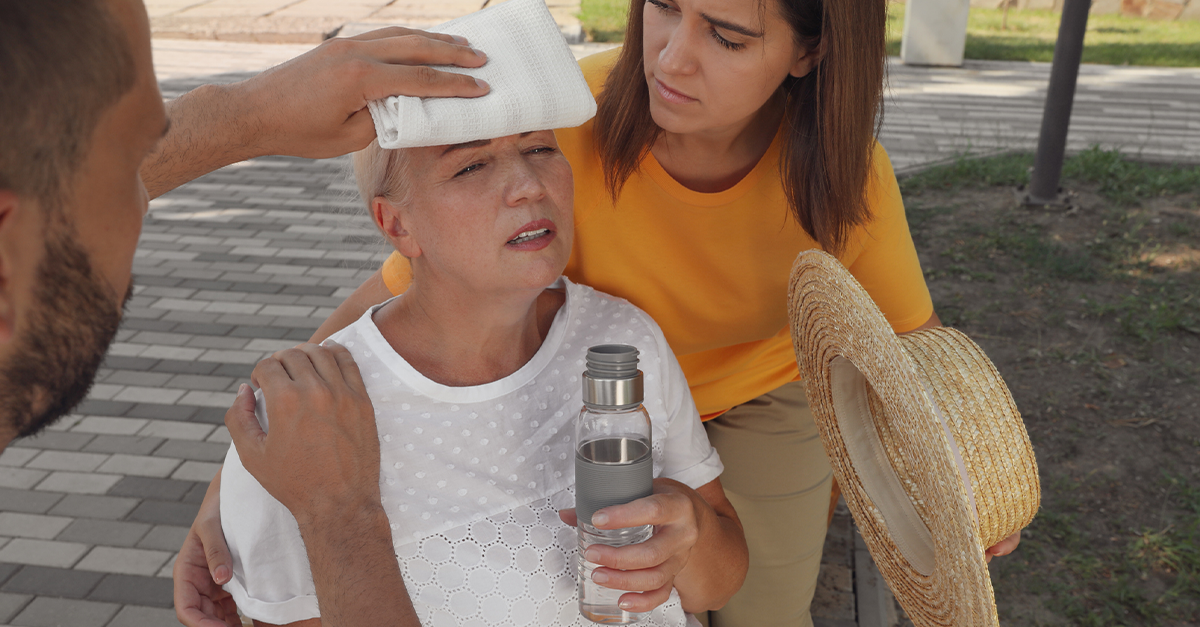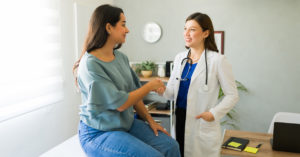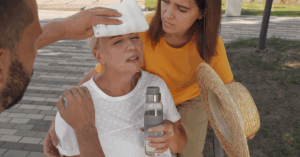More than any other time of the year, the sweltering summer months amp up the risk of heat-related illness. Experiencing very high or extended amounts of heat and humidity, coupled with the lack of adequate hydration, can set the stage for various heat-related illnesses, ranging from mild to severe.
Identifying the Condition
There are three main types of heat-related illnesses: heat cramps, heat exhaustion, and heat stroke.
Heat Cramps
The mildest type of heat illness, heat cramps manifest in the form of excruciating muscle cramps and pain or spasms in the legs, arms, and abdomen. These symptoms are brought on due to factors such as excess sweating, extreme exercise, and not drinking enough water. Sweating depletes the salt and moisture levels in the body, and low salt levels result in the cramping of muscles.
Heat Cramps Treatment
To treat your heat cramps you first need to immediately stop whatever activity is taking place and move to a cooler environment. The Centers for Disease Control and Prevention (CDC) suggests drinking water and having a snack or a drink that provides carbohydrates and electrolytes. For the latter, sports drinks do the trick. However, stay away from salt tablets.
Johns Hopkins Medicine recommends taking off nonessential clothing, placing cool cloths on the skin, fanning the skin, and slowly and carefully stretching cramped muscles. If you have heart problems, adhere to a low-sodium diet, and/or have cramps lasting more than an hour, seek medical assistance.
Heat Exhaustion
A more severe form of heat illness than heat cramps, heat exhaustion takes place when the body overeats and is unable to cool down due to an excessive loss of water and salt. It’s typically caused by extreme sweating during physical activity amid high temperatures and high humidity.
Symptoms can include dizziness, weakness, headache, nausea, irritability, thirst, muscle pain and cramps, elevated body temperature, pale skin color, and decreased urine output. Catching it early is crucial, as heat exhaustion can lead to heat stroke.
Heat Exhaustion Treatment
After moving to a cooler location, someone experiencing heat exhaustion should seek medical attention quickly. Since it can be a precursor to heat stroke, it’s wise to visit an immediate care provider such as AllCare or the emergency room. If those options aren’t accessible, call 911 for assistance.
In the meantime, drink water or sports drinks, and continue to sip cold water regularly. Help cool the body by removing excess clothing, such as socks and shoes. Additionally, apply cold compresses or douse the face, head, and neck with cold water.
Heat Stroke
When it comes to heat illnesses, heat stroke tops the list as the most severe. Due to an overexposure to high heat, the body reaches the point where it’s unable to control its temperature. The quick rise of the body’s temperature and the inability to sweat prohibits the body from cooling down.
According to the CDC, heat stroke can cause a person’s temperature to rise to 106 degrees or higher in the span of 10 to 15 minutes. Be aware of symptoms such as loss of consciousness, confusion, warm and dry skin, seizures, nausea and vomiting, and heart palpitations. If any of these symptoms are apparent, get emergency medical assistance immediately as heat stroke can be fatal or cause permanent disability.
Heat Stroke Treatment
Again, due to the life-threatening aspect of heat stroke, call 911 if it’s suspected. While waiting for medical professionals to arrive, move to a shaded area with a lower temperature. Remove all outer clothing, and take steps to quickly cool down.
The CDC suggests methods such as taking a cold water or ice bath, wetting the skin, wetting cloths with cold water and placing them on the skin, and soaking your clothing in cold water. If possible, make sure someone remains with you until emergency responders arrive.
How to Prevent Heat-Related Illnesses
Preventing heat-related illnesses from happening begins with preparation. It’s important to consume plenty of fluids, such as water and sports drinks, during vigorous or outdoor activities when temperatures are high. Skip fluids that can cause dehydration, such as alcohol and caffeinated drinks, including soda, tea, and coffee.
Dressing in light-colored, lightweight, tightly-woven, loose-fitting clothing helps keep you cool. Hats and sunglasses provide additional shade. Hydrate frequently in cooler areas and use a sunscreen that is at least SPF 50 or more.
Choose AllCare Primary & Immediate Care for Non-Emergency, Heat-Related Illnesses
AllCare Primary & Immediate Care’s immediate care providers can help diagnose and treat non-emergency, heat-related illnesses with urgency, compassion, and accessibility.
To consult an immediate provider, schedule an appointment online or call our Urgent Care appointment line at 844-779-7026.






